This article was co-authored by Theresa Fitzpatrick, LMSW. Theresa Fitzpatrick is a Certified Holistic Health Coach and the Owner of Mind Your Body Holistic Coaching. She specializes in helping women lose weight and gain confidence. Theresa holds a Master of Social Work from Fordham University and received her Transformational Coach Certification from The Health Coach Institute.
There are 12 references cited in this article, which can be found at the bottom of the page.
wikiHow marks an article as reader-approved once it receives enough positive feedback. In this case, 100% of readers who voted found the article helpful, earning it our reader-approved status.
This article has been viewed 146,011 times.
Getting healthy is a great goal and can be accomplished with changes to your diet and exercise regime. True "health nuts" typically follow an extreme version of a healthy diet -- often cutting out dairy, some meats, and anything processed. Health nuts also tend to have serious exercise regimens that go along with their extremely healthy diets. As with any diet or exercise program, please consult your health care professional before you make big changes -- being a health nut is not the path for everyone. If you want to be a health nut, get ready to work hard!
Steps
Eating Healthy
-
1Make a plan. Think about the way your diet currently is and how you want to change it. It’s always good to start small -- you can’t change habits overnight. It also might help to do it with a family member or friend (or even your whole family). Having someone there to commiserate with and keep you on track can be extremely helpful.[1]
-
2Consume fruits and vegetables. Shoot for 7-9 servings per day. Eat the ones you know you like and take this opportunity to find tasty new fruits and vegetables. Look for new recipes and preparations to help guide you. And for fruit, if in doubt, throw it in a smoothie. For vegetables, most can be roasted successfully in the oven at high heats to cook, if you aren’t planning to eat them raw. Some of the most health fruits and vegetables are:[2]
- Dark, leafy greens (spinach, kale, chard, beet greens)
- Beets
- Red peppers
- Sweet potatoes
- Berries
- Apples
- Kiwis
- Grapes
- Papaya
Advertisement -
3Choose whole grains. These are grains that include the bran, germ, and endosperm. Some common ones are barley, oats, quinoa, brown and colored rice, wheat varieties like spelt, farro, and kamut, along with many others. These are going to provide carbohydrates, but in their healthiest form.[3] Keep in mind there are many whole-grain pastas now available, and an array of whole-grain breads that are often delicious.[4]
-
4Eat lean meats. This is determined by the amount of fat in a 3 oz piece of meat -- it has to have less than 10 grams of total fat. Turkey and chicken are lean, but some red meats are as well. Look for cuts with “top” or “loin” in the title. Fish and lean meats are a great source of protein. These are important to eat as part of a balanced diet, but they should not be the elements you eat the most. You need to eat more vegetables and fruits than lean meats.[5]
-
5Drink water. It is the healthiest beverage around, and provides many benefits to your health. Try for 6-8 8 oz. glasses per day. Black coffee and tea are extremely low in calories, and can be part of your daily beverage rotation if you know it won’t be possible to stop drinking caffeine.[6]
-
6Avoid processed foods. These foods are often overly sweet or salty and tend to not contain much nutritional value. This means staying away from foods that contain the following ingredients:[7]
- High fructose corn syrup
- Anything with artificial flavors or colors
- MSG (Monosodium glutamate, a flavor enhancer)
-
7Consider minimizing dairy and meat in your diet. Many health nuts believe that both meat and dairy in large quantities are harmful to people's health. They believe that your diet should be an essentially vegan (no dairy, no eggs, no meat) diet that includes plenty of whole grains in addition to fruits and vegetables. Adding in some meat and dairy at times is fine, but they should not be the basis of your diet.[8]
Making New Habits
-
1Control your diet. If you eat out a lot, think about how you can cook at home to have more control over what you eat. Look through cookbooks and online to find new recipes that sound appealing. Part of becoming healthier is changing your way of eating, and new foods and dishes will be part of that. Cooking the same things you always make and just eating less can be more difficult than preparing something new with fewer calories in the same size portion.[9]
-
2Eat at home. Take packed lunches to work or school. For some people, just this simple step can go a long way toward helping them eat healthier and more mindfully. Home-cooked food is going to be healthier than the vast majority of restaurant food, and will not have the same kinds of preservatives or high sodium levels.[10]
-
3Go to the grocery store with a new list. Buy the foods you need to make your new healthy dishes at home. Buy ingredients, not prepared or processed foods -- these are typically going to have the same sodium and preservative levels as restaurant food. Even though it might take time getting used to cooking at home, your food is going to be both healthier and better.
-
4Go through your kitchen. Identify the foods that you want to eliminate from your diet in both your refrigerator and your cupboards. Pay particular attention to prepackaged and processed foods -- they often have unhealthy preservatives and additives, and can be very high in sodium.[11]
- Toss all trans fats. If an ingredient is "partially hydrogenated oil" this is another name for trans fats, and are a major cause of heart attacks and strokes. You will want to eventually, if not immediately, throw out all foods you have with this ingredient listed on the package.
Getting Active Every Day
-
1Exercise regularly. Take stock of your current exercise regimen. If you are exercising little, you have a lot of options to explore as you become more healthy. If you are already exercising, think about how you might want to add to the activities you already do. You might want to start a new exercise class to inspire you to exercise more.[12]
-
2Start your new exercise program. A half hour of moderate exercise six days a week is all it takes to start making a difference if you’re exercising little. Keep in mind that you also don’t have to do it all at once -- ten minutes here and twenty there will work just as well.
-
3Make your exercise program fun. Don’t do the same thing every day (unless you love it). Walk one day, take a yoga class another, and try new activities. Check with your local gym or YMCA for their schedules and amenities. If you try and do a new activity every week or so, you might find your new favorite exercise routine.[13]
-
4Ramp up your exercise. If you want to be a health nut, you need to be doing serious exercise, and moderate walks are not going to be enough. Think about what sports or kinds of training you might enjoy. You will need to do these activities most days and at a rate that allows your heart rate to stay elevated for 20-30 minutes at a time. You should also mix them up with some weight training. Some good options for cardiovascular exercise might be:
- Swimming
- Tennis
- Cross-training in a gym
- Boot-camp style exercise course
Expert Q&A
-
QuestionIs being a health nut unhealthy?
 Theresa Fitzpatrick, LMSWTheresa Fitzpatrick is a Certified Holistic Health Coach and the Owner of Mind Your Body Holistic Coaching. She specializes in helping women lose weight and gain confidence. Theresa holds a Master of Social Work from Fordham University and received her Transformational Coach Certification from The Health Coach Institute.
Theresa Fitzpatrick, LMSWTheresa Fitzpatrick is a Certified Holistic Health Coach and the Owner of Mind Your Body Holistic Coaching. She specializes in helping women lose weight and gain confidence. Theresa holds a Master of Social Work from Fordham University and received her Transformational Coach Certification from The Health Coach Institute.
Certified Holistic Health Coach So long as you're eating enough to sustain yourself and you're consuming healthy foods and ingredients, you have nothing to worry about. If you're a health nut and you feel good, you're not doing it right!
So long as you're eating enough to sustain yourself and you're consuming healthy foods and ingredients, you have nothing to worry about. If you're a health nut and you feel good, you're not doing it right! -
QuestionWhy is it so hard to be a health nut?
 Theresa Fitzpatrick, LMSWTheresa Fitzpatrick is a Certified Holistic Health Coach and the Owner of Mind Your Body Holistic Coaching. She specializes in helping women lose weight and gain confidence. Theresa holds a Master of Social Work from Fordham University and received her Transformational Coach Certification from The Health Coach Institute.
Theresa Fitzpatrick, LMSWTheresa Fitzpatrick is a Certified Holistic Health Coach and the Owner of Mind Your Body Holistic Coaching. She specializes in helping women lose weight and gain confidence. Theresa holds a Master of Social Work from Fordham University and received her Transformational Coach Certification from The Health Coach Institute.
Certified Holistic Health Coach We develop all kinds of wild relationships with food. You can totally become addicted to certain ingredients, like sugar. You can also create an unhealthy emotional pattern where eating bad food makes you temporarily feel good, but then you feel physically worse, so you chase that high again and eat more bad food. It's hard when you get started, but once you break the cycle it gets a lot easier.
We develop all kinds of wild relationships with food. You can totally become addicted to certain ingredients, like sugar. You can also create an unhealthy emotional pattern where eating bad food makes you temporarily feel good, but then you feel physically worse, so you chase that high again and eat more bad food. It's hard when you get started, but once you break the cycle it gets a lot easier.
References
- ↑ http://www.apa.org/topics/obesity/support.aspx
- ↑ http://www.choosemyplate.gov/
- ↑ Theresa Fitzpatrick, LMSW. Certified Holistic Health Coach. Expert Interview. 23 August 2021.
- ↑ http://www.cdc.gov/healthyweight/healthy_eating/index.html
- ↑ http://www.choosemyplate.gov/tools-daily-food-plans
- ↑ https://www.nlm.nih.gov/medlineplus/weightcontrol.html
- ↑ Theresa Fitzpatrick, LMSW. Certified Holistic Health Coach. Expert Interview. 23 August 2021.
- ↑ http://greensmoothiegirl.com/about/health-fanatic/
- ↑ http://www.nutrition.gov/weight-management/strategies-success/interested-losing-weight
- ↑ http://www.cdc.gov/healthyweight/healthy_eating/meals.html
- ↑ Theresa Fitzpatrick, LMSW. Certified Holistic Health Coach. Expert Interview. 23 August 2021.
- ↑ http://www.mayoclinic.org/healthy-lifestyle/fitness/in-depth/exercise/art-20048389
- ↑ http://www.ymca.net/
- ↑ Lyssandra Guerra. Certified Nutrition & Wellness Consultant. Expert Interview. 25 March 2020.
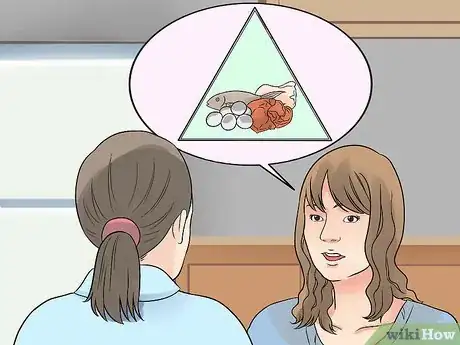
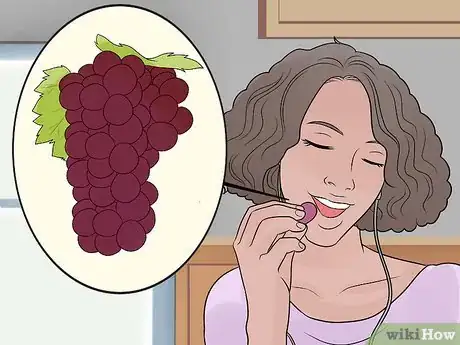
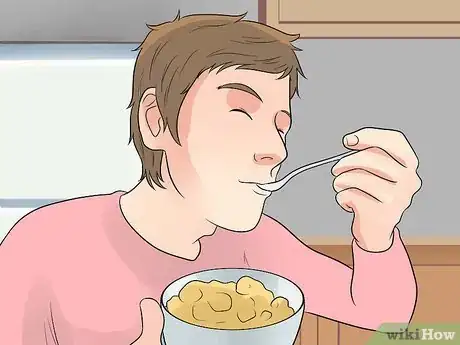


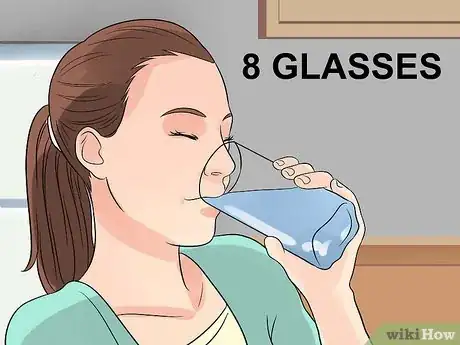






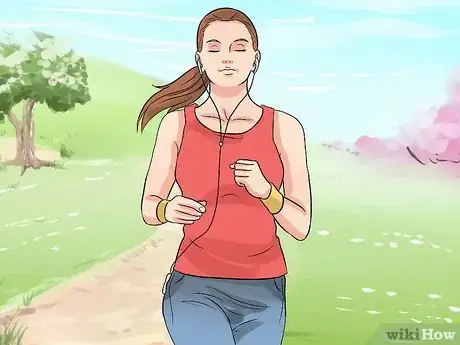
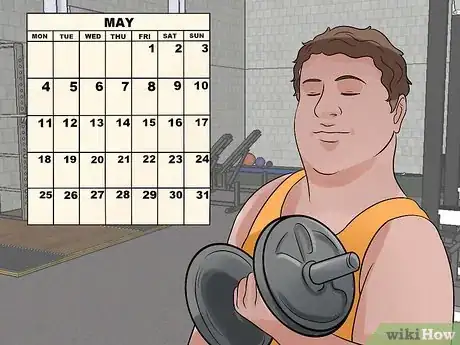
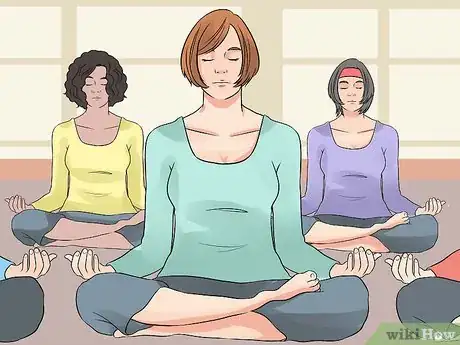



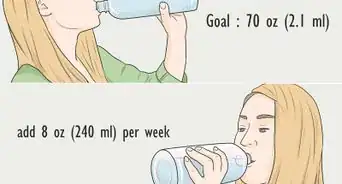







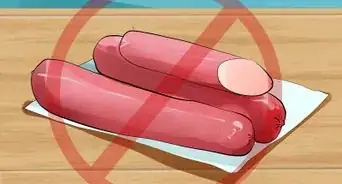












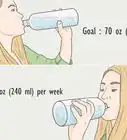




































Medical Disclaimer
The content of this article is not intended to be a substitute for professional medical advice, examination, diagnosis, or treatment. You should always contact your doctor or other qualified healthcare professional before starting, changing, or stopping any kind of health treatment.
Read More...